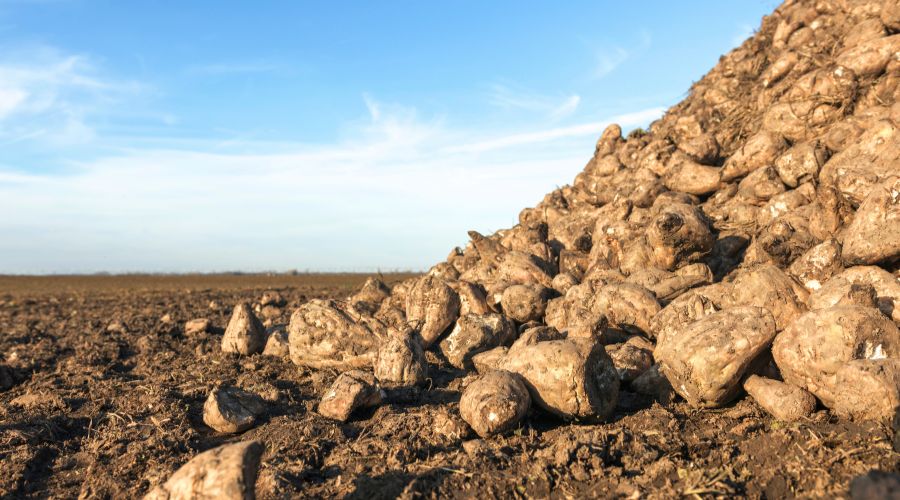Storability is vital for the quality of sugar beet
7th November 2024
Sugar beet breeder SESVanderHave has spoken about the importance of storability, as it is vital that the quality of the beets is maintained as they wait to be taken to the sugar plant.

The expert added that external factors such as temperature and humidity play an important role in the sugar beet storage process.
The quality of harvesting and the construction of a neat beet pile are also crucial. Tare, damage (root tip break) and defoliation must therefore always be closely monitored.
All of these factors, together with the storage duration, strongly influence the storability of sugar beet, SESVanderHave explained.
Preventable losses
The arable expert said that genetics is not the most important factor, although it certainly plays a role in improving beet storability. A rhizoctonia variety, for example, will have fewer rotten beets in a pile than other varieties.
In addition, differences in genetics are associated with variations in root tip break as well as other types of harvesting damage. As a result, some genetic varieties exhibit better storability, because there are fewer access pathways for pathogens.
Talking about why a grower would not choose a variety with better storability, a spokesperson for SESVanderHave said: “In principle, it’s not so much about benefits, but rather about preventable losses.
“Assuming that all other conditions are identical (quality of harvesting, climate, etc.), a variety with better storability can limit storage losses.”
Comparison of roots after storage
SESVanderHave used a penetrometer to examine the mechanical strength of sugar beet roots.
Hendrik Tschoep, lead on this project at SESVanderHave, explained how the investigation worked in precise terms: “In the root, the presence of sugar-rich tissues, protected by denser fibres, limits deterioration during storage.
“We identified an excellent correlation between the penetrometry data and the behaviour of beets in storage (in terms of sugar loss as well as tolerance of physical and biological stress).
“This method makes it possible to select varieties that are suitable for longer storage. In this way, the method helps improve competition in the beet industry.”
Mr Tschoep added that in previous years, various methods have been tested for classifying varieties based on their suitability for long-term storage.
These attempts have been largely ineffective and inaccurate. The selection of varieties suitable for long-term storage requires experiments to be carried out under controlled storage conditions, together with a range of analyses.
“Such methods are complex, expensive, and time-consuming, hence our need to find new evaluation methods.
“The registered patent describes a method for predicting the tolerance of sugar beet to the impact of harvesting and/or other factors that are responsible for sugar loss during storage,” Mr Tschoep concluded.
READ MORE: Plans submitted to build new sugar beet drier at Wissington factory
READ MORE: BBRO advises how to recover more yield from your fields
Read more sugar beet news.
